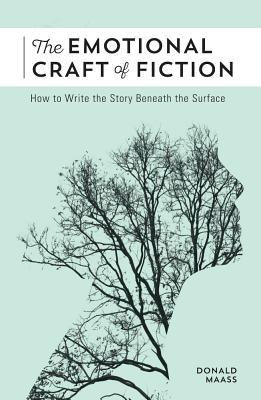One of the best lessons I’ve learned recently is that good writing is a form of manipulation. When an author manipulates the emotions of both their characters and their readers, the story resonates on a deeper level with the reader. The Emotional Craft of Fiction by Donald Maass is an excellent resource if you want to learn how to make your writing connect with your readers on a more visceral level. Below are some of the notes I’ve made after reading the book:
 * Don’t just write about the emotions your character is experiencing, but about the experience they are having to endure. Make your reader experience their journey, too.
* Don’t just write about the emotions your character is experiencing, but about the experience they are having to endure. Make your reader experience their journey, too.
* Pay attention to the details; have your character ruminate about the big impact of small events or the easily overlooked ramifications of major plot twists.
* Your characters’ emotions have more impact when they have personal significance to your readers, something the reader can relate to and understand, which is much more impactful than just the ‘fact’ that your character feels a certain way.
* Have a character become aware of the meaning of something small and common and everyday that they ‘just now realize’.
* “Plot events are what happen. Inner moments give those events meaning. Together they both shelter and lead the reader somewhere new.” ~ Donald Maass
* Pacing involves emotion, not just plot. There need to be emotional shifts, fluctuations, and growth entwined with the story-line and action.
 * Stakes should be personal to your character. Increase the emotion by having your character choose between the morally correct choice and the choice that is better for them personally. Make your readers feel the angst of the conflict.
* Stakes should be personal to your character. Increase the emotion by having your character choose between the morally correct choice and the choice that is better for them personally. Make your readers feel the angst of the conflict.
* Your protagonist should discover something unexpected about his/herself over the course of the story, an epiphany about something deep at their core that makes them who they are. They should change and evolve.
* All plot events can be opportunities to manipulate emotions. Use them.
 * Make the reader take an active role and get their ‘wheels turning’ – make them develop their own insight into the character, make them consider a moral decision your character has to make, make them think about your character and the character’s choices . . . even when they aren’t reading.
* Make the reader take an active role and get their ‘wheels turning’ – make them develop their own insight into the character, make them consider a moral decision your character has to make, make them think about your character and the character’s choices . . . even when they aren’t reading.
* Characters with good values are more appealing. A character committed to justice, family, self-sacrifice or just ‘doing the right thing’ hooks readers better than a character after fame, fortune, or a self-serving agenda.
* Make your story more compelling by creating a sense of hope. Make your readers fear that the hope won’t be fulfilled.
* After writing your first draft, decide what hurt your protagonist most, then plant seeds throughout the story that suggest that they are particularly vulnerable to the source of that pain.
What I’ve taken away most is that in order to write compelling fiction, you need to find a way to develop a personal connection between your readers and your story and characters. When readers feel invested in the outcome, it becomes harder for them to put the book down. Give them something to root for, something to fear, and above all else, make them feel and care.
If you have any suggestions or tips you’d like to add, I’d love to hear them!
Please introduce yourself and what you write if you feel so inclined . . . we’re all in this together and I consider you a member of my #writingcommunity! I look forward to connecting with you here and on social media, and am open to guest bloggers who’d like to share their knowledge or experiences!
I LOVE this so much! To write with that much emotion and power is a true gift. Thanks for sharing these tips! ❤
LikeLiked by 1 person
Thanks!
LikeLike